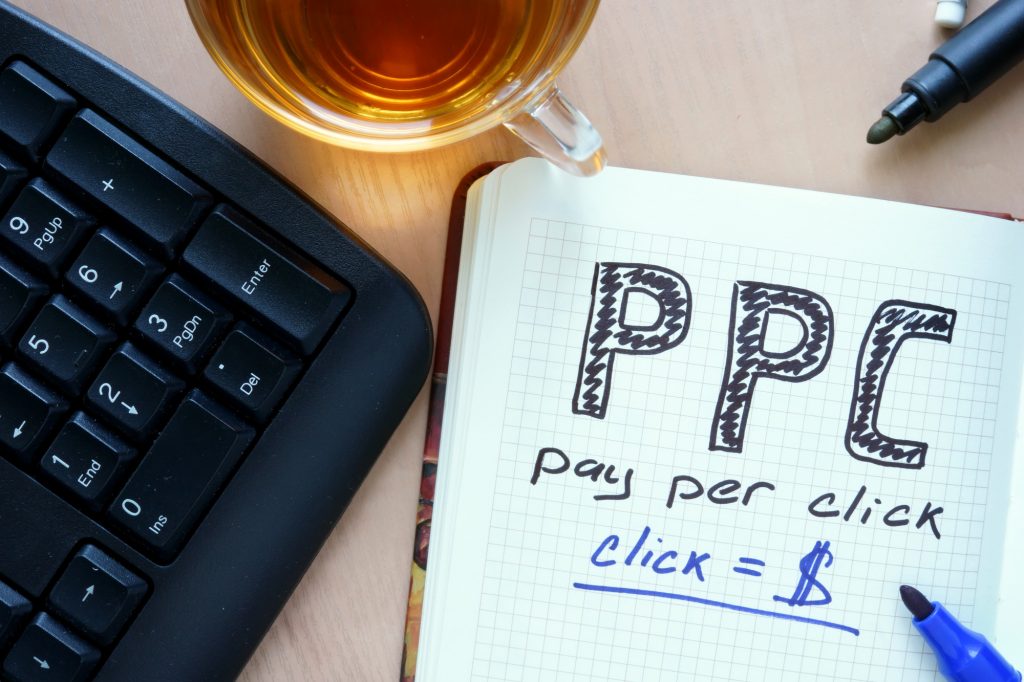
Live animals and full-sized homes are two of the few things unavailable for purchase on Amazon. There’s not much else you can’t buy, however.
For sellers, that means they need to stand out amongst the masses of products to pick from.
That’s where Amazon PPC campaigns come in. These campaigns allow sellers to get in front of potential customers for only the cost of a click.
Following the 10 Commandments of an Amazon PPC Campaign
Success comes from understanding. Before we leap into the commandments we’re going to break down words you should know and understand when running ad campaigns on Amazon.
PPC stands for pay-per-click, and quite literally means that you pay when someone clicks on your ad. They are measured in clicks (which you pay for) and impressions. The impressions simply signify how many people have seen your ad without engaging with it.
Keywords note the user query that should trigger your ad to appear. There are multiple ways to input these keywords an elusive quality to finding the best ones.
They are three keyword match types:
- Broad – Will show variations, synonyms, and misspellings
- Phrase – Will show in long-tail keyword phrases
- Exact – Will show your exact keywords and misspellings or plurals
There’s quite a bit to know when it comes to general PPC knowledge, and even more to understand when pared down to Amazon specifically. But now that we have the basics out of the way, it’s time to jump into the most important Amazon PPC campaign commandments.
Follow these for success, avoid them at your own detriment.
1. Always Optimize Your Listing
Without a quality listing, those who do click on your ad will just click away. This results in lower sales and raised ad spend. Neither of which are positives.
Give your prospects a reason to stay on the page through page optimization. This includes a good description, images, and reviews of your product.
2. Select Profitable, High Converting Keywords
Find the keywords that are profitable and sink more money into them. You should be going through and picking out these superior keywords on a weekly basis.
Another tip is to make high spend keywords that aren’t resulting in conversions, a negative keyword. Negative keywords mean that your ad will not show up when the keyword is searched.
3. Then Pick the Right Negative Keywords
Jumping further into negative keywords, be sure that you are adding negative keywords to narrow those who see your ad to only those who will be interested. You want your ad to be relevant to the search query of the user.
If you sell a cheap product you wouldn’t use luxury as a keyword. Luxury would instead be a negative keyword. Make sense?
4. Set a Budget from the Start
Without a budget or goal, things could get messy. You don’t want to leave money on the table but you also don’t want to spend way more than you had originally hoped.
When setting up a campaign you can set a budget. This will keep your ad spend from ballooning up higher than you can afford.
5. Use Amazon Campaign Tools for Better Results
There is a world of Amazon-related campaign tools just a Google search away. Improve your Amazon keyword ranking or your ad bid strategy with campaign tools.
6. Always Bid on Your Own Brand Keywords
You might be thinking: But why, isn’t that a waste of money?
It might be the logical conclusion that bidding on your own keywords would be a waste. But if you think about it, if you aren’t bidding on your keywords then who is?
Your competitors. That’s who.
By bidding on your own brand keywords you are protecting the slots from customer stealing competitors. If you leave those ad slots open you’re leaving yourself vulnerable. Competitors will swoop in to steal away the attention of a prospect that would otherwise buy your product.
7. Key a Trained Eye on Your Daily Budget
If your daily budget is low then you could run through your entire budget before the day is over. With most online shoppers filling their carts in the evening or at night, it’s unwise to not have ads running at that time.
Check in on your campaign to ensure that it’s being served to customers when they’re doing the bulk of their shopping.
8. Run Manual and Automated Campaigns for Best Results
Running automated campaigns allows you to be listed in the sponsored related products section of a competitor product page. This is not something you can do with a manual campaign.
Coupled together, you get the benefits of a targeted campaign by running one that is manual and getting onto competitor pages with one that is automated.
9. Watch Your Automated Campaign for High Converting Keywords
Keep an eye on your automated campaign. Any keywords that are high-converting should be moved over to your manual campaigns.
The great benefit to running automated campaigns is the ability to find high-value keywords you never would have come up with on your own or through research.
Don’t let those valuable keywords slip you by!
10. Be Strategic When Picking a Time to Run an Amazon PPC Campaign
A great time to run a PPC campaign on Amazon is when a product is newly launched. The catch here is that there should already be a few buys and positive reviews showing up on the product page. People are more likely to buy when there is feedback showing it is a good purchase decision.
Reaping the Benefits of Amazon PPC Campaign Success
Armor up with these Amazon PPC tips and take on your next campaign with the skill and strategy needed for clear results. As Amazon becomes a marketplace overflowing with product options, you need to know how to stand out from the noise.
Check out our other articles on pay-per-click campaigns and Amazon advertising for more guidance.

